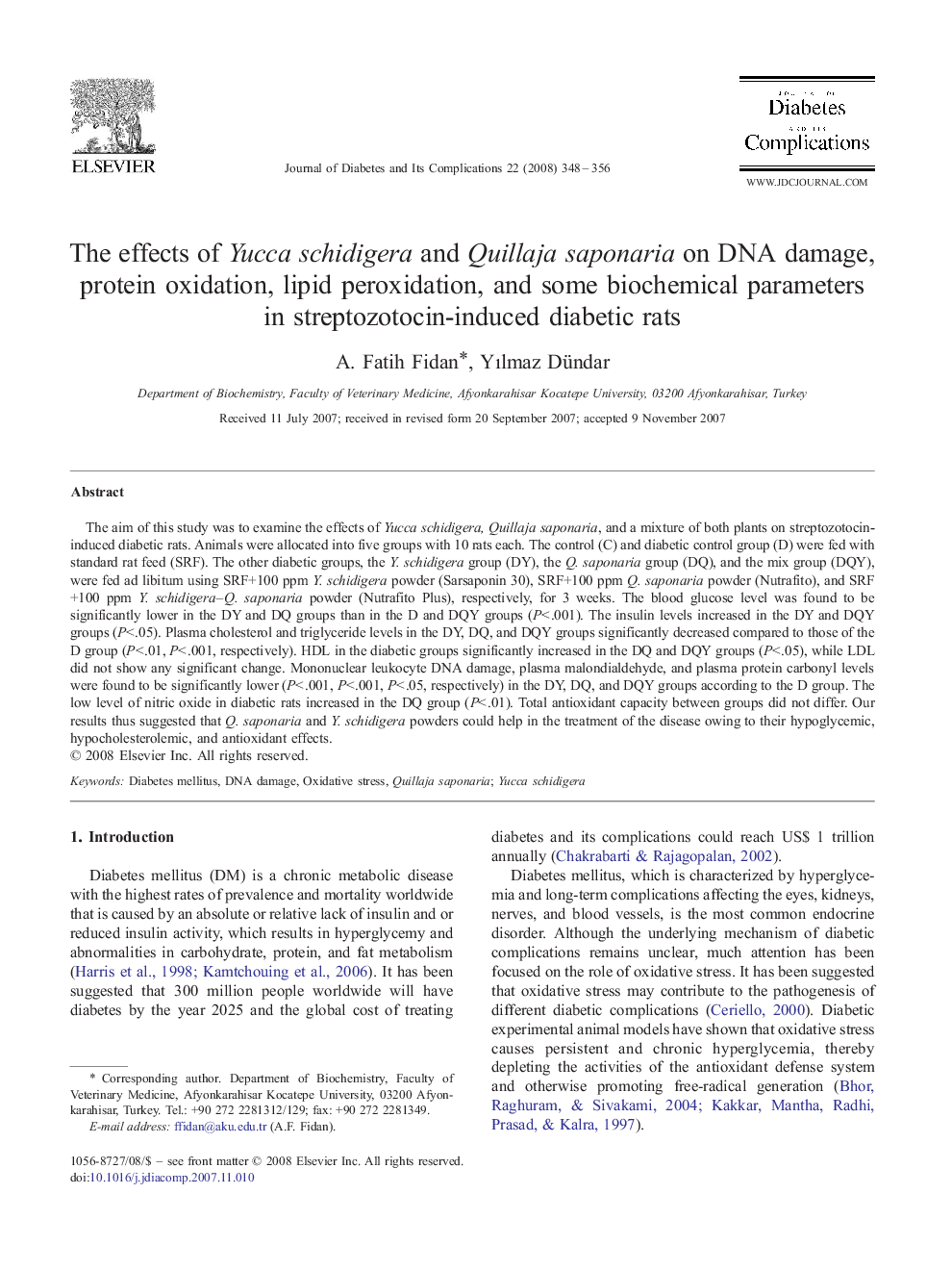| Article ID | Journal | Published Year | Pages | File Type |
|---|---|---|---|---|
| 2804710 | Journal of Diabetes and its Complications | 2008 | 9 Pages |
The aim of this study was to examine the effects of Yucca schidigera, Quillaja saponaria, and a mixture of both plants on streptozotocin-induced diabetic rats. Animals were allocated into five groups with 10 rats each. The control (C) and diabetic control group (D) were fed with standard rat feed (SRF). The other diabetic groups, the Y. schidigera group (DY), the Q. saponaria group (DQ), and the mix group (DQY), were fed ad libitum using SRF+100 ppm Y. schidigera powder (Sarsaponin 30), SRF+100 ppm Q. saponaria powder (Nutrafito), and SRF+100 ppm Y. schidigera–Q. saponaria powder (Nutrafito Plus), respectively, for 3 weeks. The blood glucose level was found to be significantly lower in the DY and DQ groups than in the D and DQY groups (P<.001). The insulin levels increased in the DY and DQY groups (P<.05). Plasma cholesterol and triglyceride levels in the DY, DQ, and DQY groups significantly decreased compared to those of the D group (P<.01, P<.001, respectively). HDL in the diabetic groups significantly increased in the DQ and DQY groups (P<.05), while LDL did not show any significant change. Mononuclear leukocyte DNA damage, plasma malondialdehyde, and plasma protein carbonyl levels were found to be significantly lower (P<.001, P<.001, P<.05, respectively) in the DY, DQ, and DQY groups according to the D group. The low level of nitric oxide in diabetic rats increased in the DQ group (P<.01). Total antioxidant capacity between groups did not differ. Our results thus suggested that Q. saponaria and Y. schidigera powders could help in the treatment of the disease owing to their hypoglycemic, hypocholesterolemic, and antioxidant effects.
